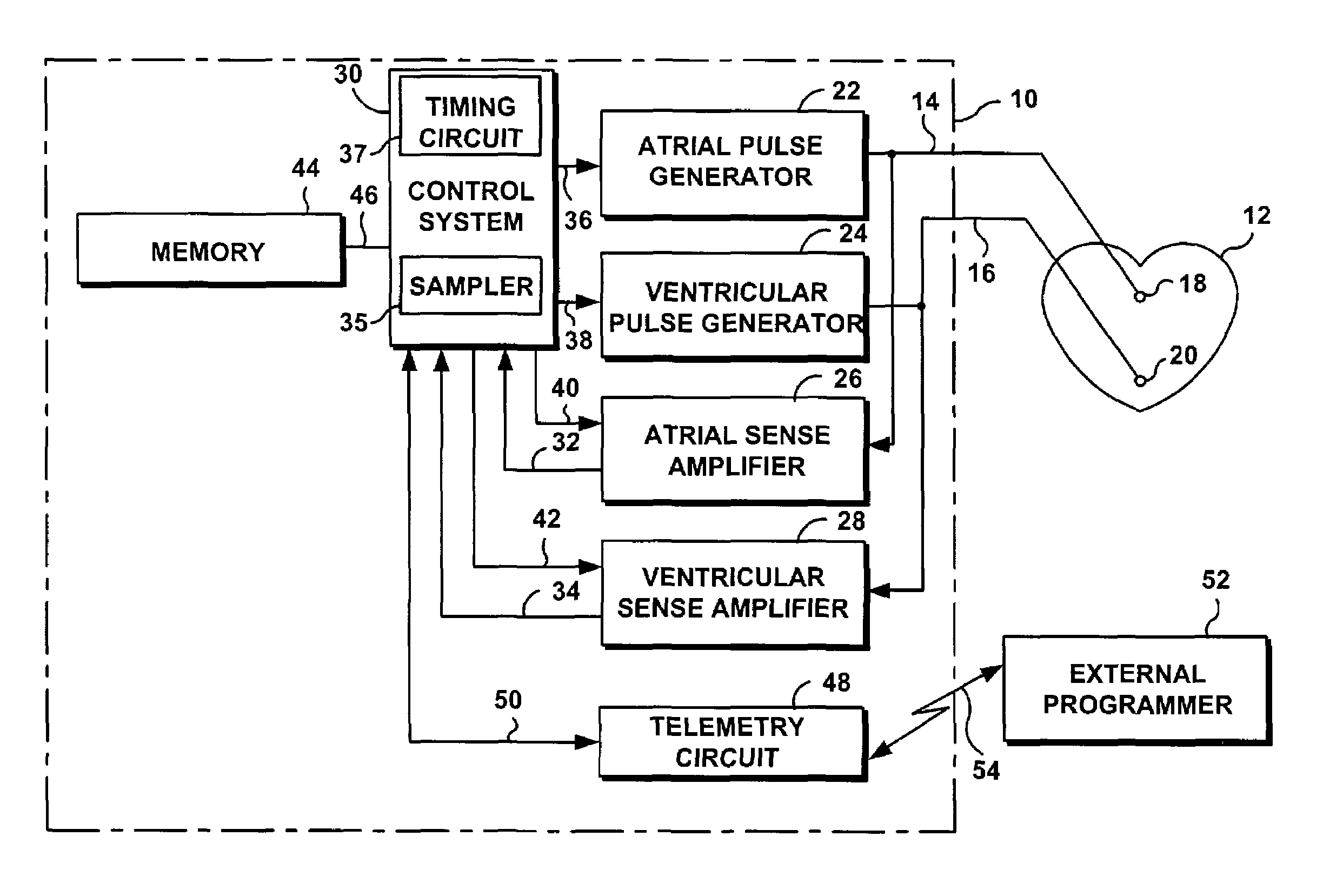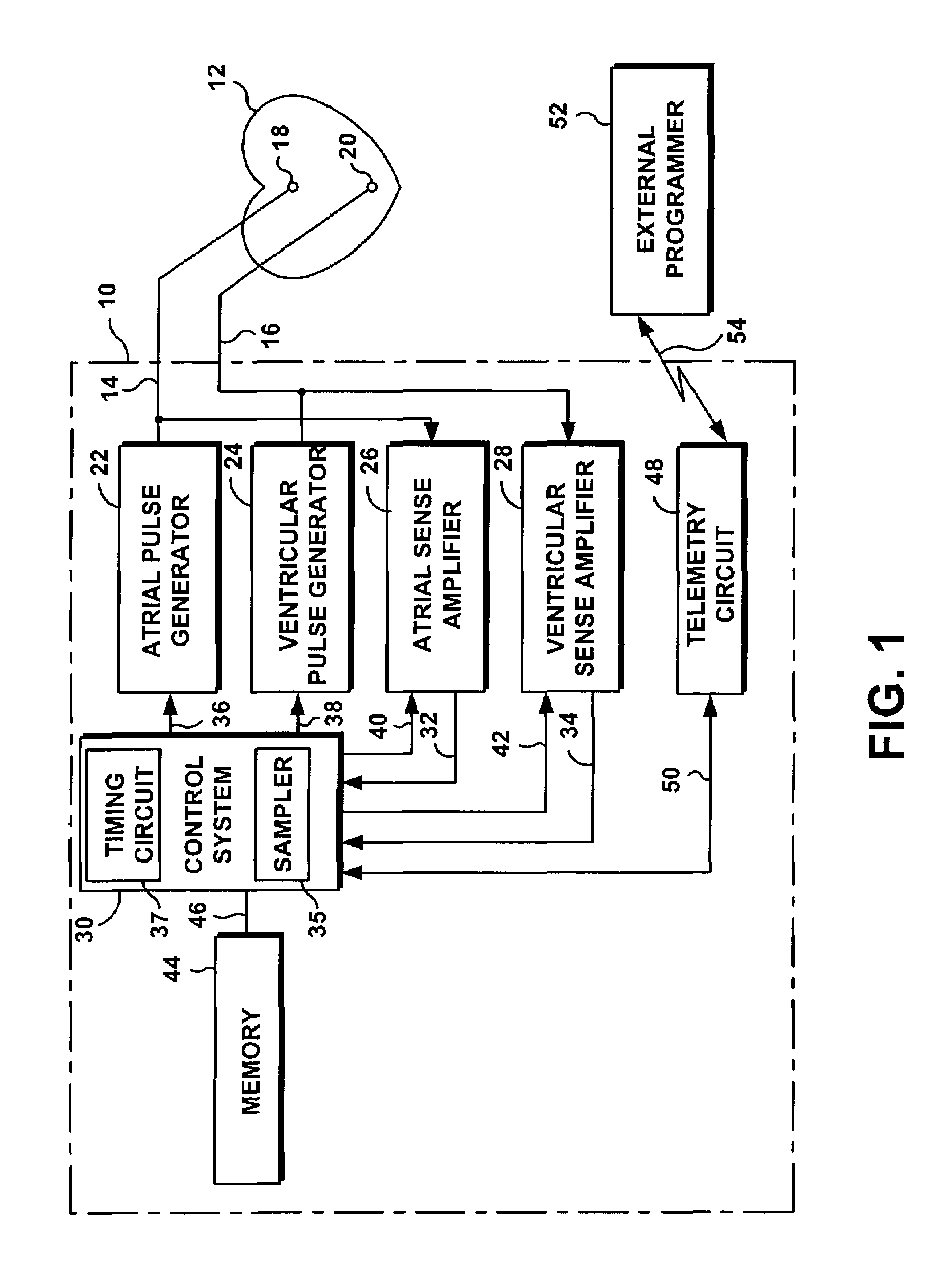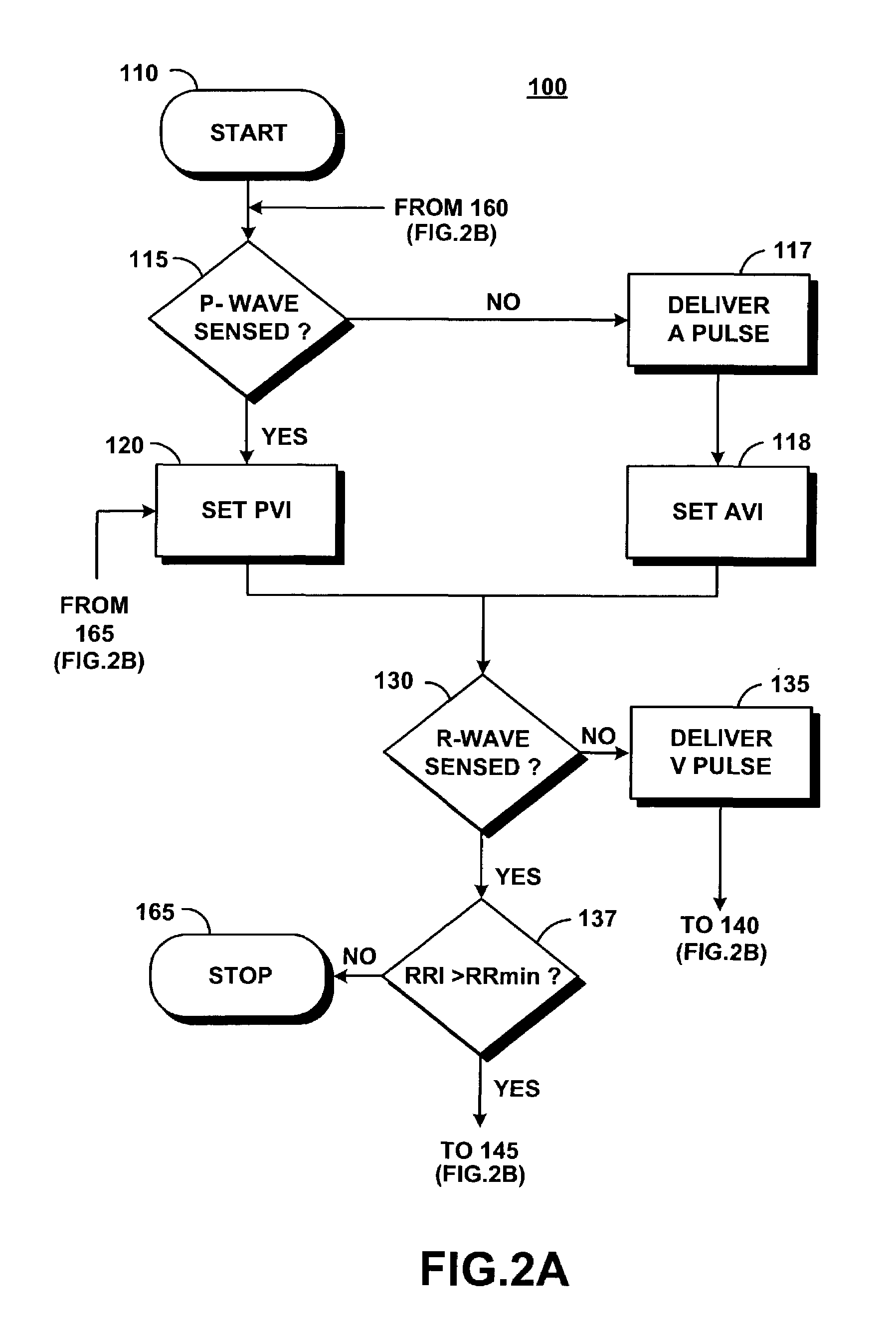System and method for automatically and adaptively segmenting an atrial blanking period
a blanking period and automatic segmentation technology, applied in the field of automatic and adaptive segmentation of atrial blanking period, can solve the problems of inability of the atrial channel to sense the next intrinsic atrial event, unfavorable situation, and inability to achieve the effect of maximizing the atrial sensing window
- Summary
- Abstract
- Description
- Claims
- Application Information
AI Technical Summary
Benefits of technology
Problems solved by technology
Method used
Image
Examples
Embodiment Construction
[0028]With reference to FIG. 1, the system and method of the present invention are intended for use in an implantable cardiac stimulation device 10, such as a pacemaker, a defibrillator, a cardioverter, an implantable cardioverter-defibrillators (“ICDs”), or a similar stimulation device capable of monitoring and detecting electrical activities and events within a patient's organ such as a heart 12. For illustration purposes, the cardiac stimulation device will be described in term of a dual-chamber pacemaker 10 which is programmed and implanted in a patient with intact atrioventricular (“AV”) conduction.
[0029]The pacemaker 10 is coupled to a patient's heart 12 by way of leads 14 and 16. The lead 14 includes an electrode 18 which is in contact with one of the atria of the heart 12. The lead 16 includes an electrode 20 which is in contact with one of the ventricles. The lead 14 carries stimulating pulses to the electrode 18 from an atrial pulse generator 22, while the lead 16 carries ...
PUM
 Login to View More
Login to View More Abstract
Description
Claims
Application Information
 Login to View More
Login to View More - R&D
- Intellectual Property
- Life Sciences
- Materials
- Tech Scout
- Unparalleled Data Quality
- Higher Quality Content
- 60% Fewer Hallucinations
Browse by: Latest US Patents, China's latest patents, Technical Efficacy Thesaurus, Application Domain, Technology Topic, Popular Technical Reports.
© 2025 PatSnap. All rights reserved.Legal|Privacy policy|Modern Slavery Act Transparency Statement|Sitemap|About US| Contact US: help@patsnap.com



